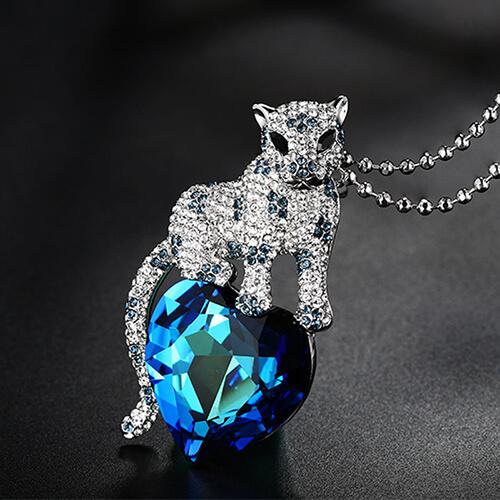What gemstone is kyanite

Kyanite is a natural refractory raw material mineral with high refractoriness and large volume expansion at high temperature. There are parallel stripes on the crystal plane. The color is light blue or cyan, bright gray and white. Belongs to high alumina minerals. Chemical composition: Al2O3 63.1%, SiO2 36.9%. Single crystals are often in the shape of long plates or blades parallel to (100). Naturally produced kyanite is often close to the ideal composition. It has strong chemical resistance, high thermal shock mechanical strength, and irreversible thermal expansion. It is the main raw material for the production of unshaped materials, electric furnace roof bricks, phosphate non-burning bricks, mullite bricks, and low creep bricks. It is also a metamorphic mineral, mainly produced in regional metamorphic crystalline schist, and its metamorphic facies range from greenschist facies to amphibolite facies. It is also often used as gemstone ring face, bracelet, necklace. Switzerland and Austria are well-known origins.
The efficacy and role of kyanite

Kyanite is an excellent harmony stone and meditation stone, a gentle and powerful conductor, a high-frequency energy amplifier, and a stimulus of supernatural abilities and intuition. It is believed that it can implement and stabilize spiritual energy, promote spiritual development, and maintain the connection with the "out of the body" soul.
In addition, it is said to promote the recall of dreams, thereby enhancing the efficacy of dream therapy. Crystal therapy believes that kyanite can quickly align the chakras with the spiritual body, essence the human meridians, and restore vitality to the body's organs. Since kyanite does not retain negative energy, it does not need to be demagnetized, which is more convenient for practical use. Many people believe that it is good for body, mind and spirit. Psychologically, kyanite encourages people to show compassion to others.
In addition, kyanite can develop the Throat Chakra, promote the truth, and help people express themselves and communicate. For some people who are in confusion, Kyanite is said to help them resolve confusion, strengthen logical and linear thinking skills, eliminate fear, hallucinations, anger, frustration and pressure, and make them easy to accept the truth. In addition, some metaphysicians believe that kyanite can protect people from worries about karma.
Kyanite characteristics details
(1) Chemical composition: AIhSiO: often contains iron, chromium, soft, magnesium, calcium and other micro-It elements. It is a homogenous and multi-like variant with red xiangshi and xilinshi. The composition is the same and crystallizes into different crystal forms . Kyanite is known for its crystal hardness and directionality.
(2) Crystal habit: triclinic system. Columnar, plate-shaped crystals. Double crystals are common.
(3) Hardness: 4.5 in the direction of parallel crystal extension and 6.5-7 in the direction of perpendicular crystal extension.
(4) Transparency: transparent to translucent.
(5) Luster: Borui luster to pearl luster.
(6) Color: colorless, blue and blue-green. Sometimes the color distribution is uneven, the blue crystals are darker in the middle, and the edges become light blue.
Introduction of Kyanite Origin
The most common origins of kyanite are California, Iowa, and Georgia; Canada; Ireland; France; Italy; Kyanite jewelry; Switzerland; India; Brazil; North Korea; Australia. And China. Distribution of deposits in China: Hanshan in Muyang, Jiangsu; Yinshan in Henan; Xingtai, Hebei; Dianbusmiao, Inner Mongolia; Bulagai, Xinjiang; Fanzhi, Shanxi; Yuexi and Huoshan in Anhui; Dahuanggou in Liaoning; Wenchuan in Sichuan; Yunnan heat Reservoir; Rock in Jilin; Danghekou in Xiangxian County, Shaanxi Province, etc. Origin of names: The name kyanite is derived from the Greek kyanos and refers to the most common color of kyanite.




